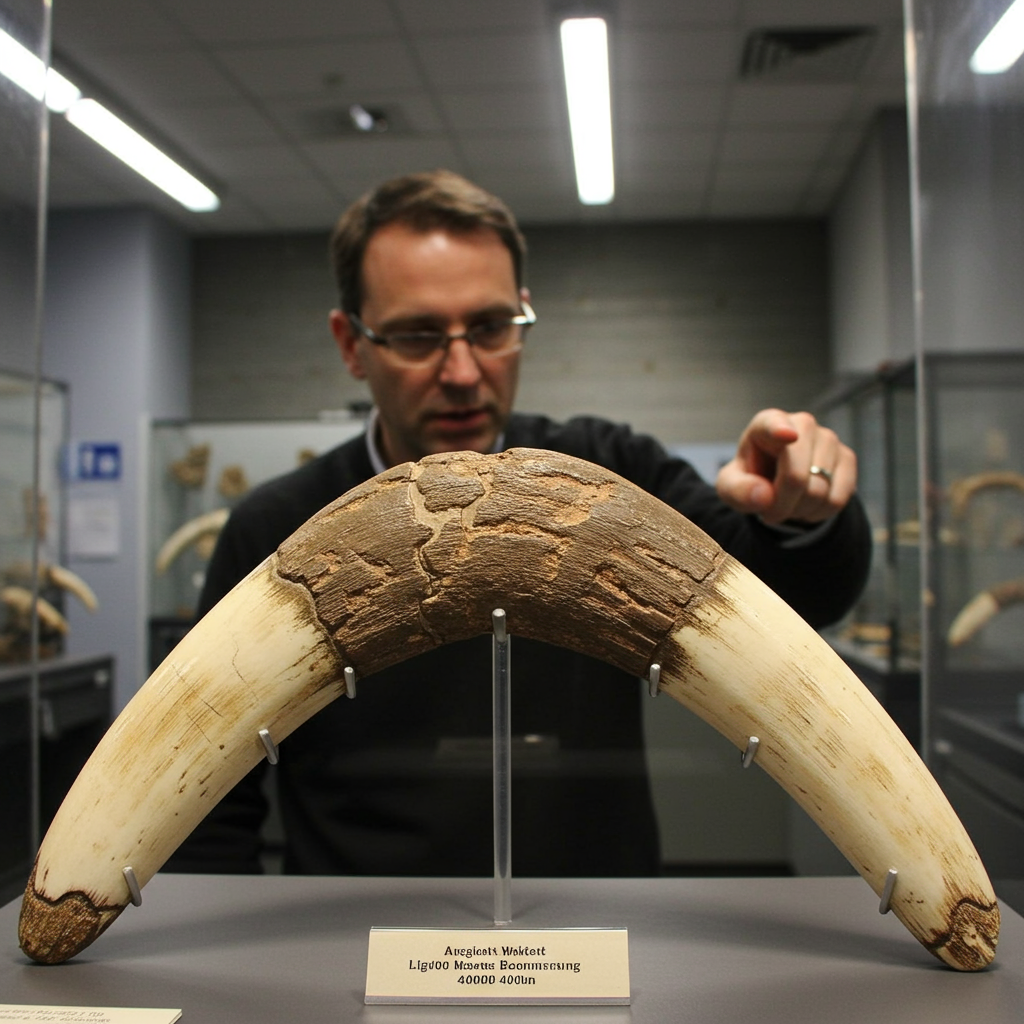Ancient Mammoth-Tusk Boomerang Revealed as Twice as Old
A fascinating artifact discovered in a Polish cave, long believed to be one of the world’s oldest boomerangs, just got a stunning new age estimate. Originally dated to a respectable 18,000 years old, new research suggests this unique boomerang, crafted from a mammoth tusk, could be a remarkable 40,000 years old – more than twice its previous age.
This revised timeline dramatically shifts our understanding, placing the boomerang within a pivotal period when early humans in Europe began exhibiting a notable increase in artistic expression and symbolic behavior.
Discovery in Obłazowa Cave
The journey of this ancient boomerang began in 1985 when archaeologists unearthed the 72-centimeter-long ivory artifact in Obłazowa cave in Poland. It was found buried deep within a sediment layer, situated beneath six overlying strata. Further sifting of the sediment near the boomerang revealed other significant items: a Homo sapiens thumb bone, tools made from antler, a bone bead, and pendants fashioned from fox teeth.
Initial radiocarbon dating in the 1990s produced a puzzling result. While the human thumb bone was dated to roughly 31,000 years old, the boomerang from the same layer yielded an age of only 18,000 years. This significant discrepancy, with the boomerang appearing thousands of years younger than artifacts found in layers above it, immediately raised questions among researchers.
The Challenge of Contamination
The scientific team, led by Sahra Talamo at the University of Bologna in Italy, suspected that the boomerang’s initial dating might have been skewed by contamination. As Talamo explained, even minute traces of modern carbon, perhaps introduced by glues or conservation materials used during preservation, can drastically throw off radiocarbon dates – potentially by tens of thousands of years.
Analyzing the carbon-nitrogen ratios in the human thumb bone also pointed to altered collagen quality in the original samples, indicating they weren’t ideal for reliable radiocarbon dating.
A New Approach to Dating
Knowing that re-dating the precious ivory boomerang directly could potentially damage it and likely still be affected by the suspected contamination, Talamo and her colleagues chose a different strategy. Instead of focusing solely on the boomerang, they meticulously dated 13 animal bones found nearby in the same sediment layer. They also performed a new analysis to re-date the Homo sapiens thumb bone.
Using statistical modeling to synthesize the data from these multiple, cleaner samples, the researchers were able to reconstruct a more accurate timeline for the entire sediment layer. Their compelling results indicated that the entire archaeological context – and therefore the boomerang and human bone within it – dates to a period between 39,000 and 42,000 years ago.
This situation serves as a valuable lesson for archaeological practice today. As Talamo noted, it’s a reminder to museums and researchers to complete all crucial scientific analyses on extraordinary finds before applying conservation or restoration materials that could introduce contaminants.
The Oldest Known Boomerang by Far
The revised age of around 40,000 years makes the Obłazowa cave artifact the oldest known boomerang discovered to date. This places it an astonishing 30,000 years earlier than the next oldest known boomerangs, which are wooden artifacts crafted by Indigenous Australians.
Unlike simpler throwing sticks – like the 300,000-year-old wooden implement found in Schöningen, Germany – boomerangs are characterized by their distinct curved and aerodynamically shaped design. Even if they weren’t intended to return to the thrower, this sophisticated shape sets them apart from basic projectiles.
More Than Just a Tool?
The Obłazowa boomerang’s size (72 cm) and design suggest that while it could likely fly, it was probably not engineered to return to the person who threw it. Its context and features point towards a different, potentially more symbolic or ceremonial purpose.
Evidence supporting this interpretation includes the artifact’s decorative engravings, traces of reddish pigment, and smooth polish. Furthermore, its deliberate placement alongside a human thumb bone within a circle of imported stones in the cave hints at a significance beyond simple utility.
Glimpse into Early Human Innovation
The discovery and accurate dating of this mammoth-tusk boomerang offer invaluable insights into the cognitive abilities and craftsmanship of early Homo sapiens. The new timeline positions the artifact firmly within the Early Aurignacian period, a time beginning around 40,000 years ago that witnessed a significant burst of artistic and symbolic expression across Europe.
This era saw the emergence of other complex symbolic artifacts, such as detailed mammoth ivory figurines, early forms of rock art, and aesthetically crafted tools, all suggesting a sophisticated level of abstract thought and creativity among these early human populations. The Obłazowa boomerang stands as a remarkable testament to the ingenuity and cultural depth of our ancient ancestors.




